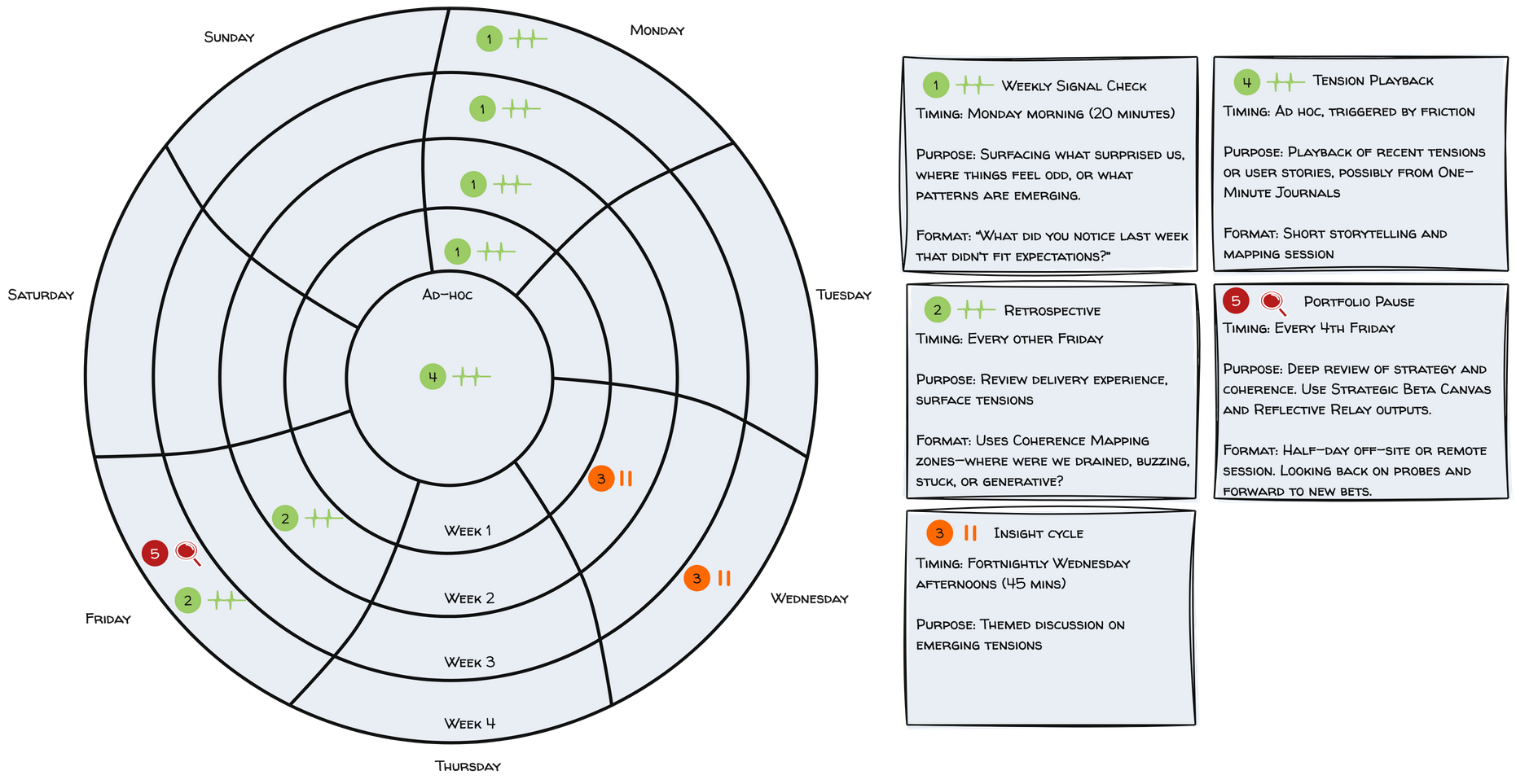Learning Rhythm Map
If we are stuck in misaligned or stagnant learning rhythms, and we map the actual pulses of energy, insight, and change within our system, then we tend to design reflection cycles that are more timely, strategic, and alive, enabling real-time learning and adaptive coherence.
When strategy falters in complexity, it’s rarely due to poor intent or lack of data. More often, it’s because reflection happens out of sync with lived work. Learning is treated as a scheduled event rather than an emergent rhythm. In most organisations, the moments when insight arises, improvisation under pressure, hallway chats, debriefs after failure, are invisible to the official review cadence.
How to use this pattern
This pattern unfolds as a collective tempo audit:
Identify Current Cadences
Map formal rhythms: stand-ups, retros, reviews, planning cycles. Observe tone, frequency, and energy.
Name Emergent Learning Moments
Ask when real learning actually happens. Pinpoint where improvisation, surprise, and reflection surface in practice.
Spot Gaps and Misalignments
Overlay the two maps. Where is reflection performative or sterile? Where is energy high but unrecognised?
Design a New Rhythm
Create an intentional cadence using three layers:
Pulses: short, frequent check-ins to surface signals
Beats: periodic syntheses of learning and direction
Reflections: slower, deeper moments to revisit strategic tensions and coherence
Embed the Rhythm Visually
Name each rhythm point with purpose and personality (e.g. “Signal Check,” “Tension Playback,” “Portfolio Pause”). Visualise in a calendar or map.
An example of a learning rhythm map
Test and Tune
Treat the rhythm itself as a living probe. Adjust based on feedback, energy, and consequence.
Affordances
Names like “Insight Cycle” and “Pulseboard” offer intuitive cues that these are moments for reflection.
Reveals the real tempo of change beneath the formal governance layer.
Regular rhythms can falsely suggest learning is happening when it’s not. This pattern helps distinguish ritual from consequence.
Stances
Noticer: Senses where learning is really happening. Where insight, drift, or tension show up in daily rhythms.
Facilitator: Designs the cadence. Shapes the spaces and formats for reflection, adjusting tone, pacing, and participation.
Steward: Anchors the rhythm to purpose. Ensures the learning cycle remains meaningful and evolves alongside organisational intent.
Challenger: Critiques the rhythm and its assumptions. Pushes the group to reflect on what’s not being reviewed or who’s not in the loop.
Synthesiser: Connects learning across moments. Spots emerging patterns, themes, and tensions over time, helping inform rhythm adaptations.

